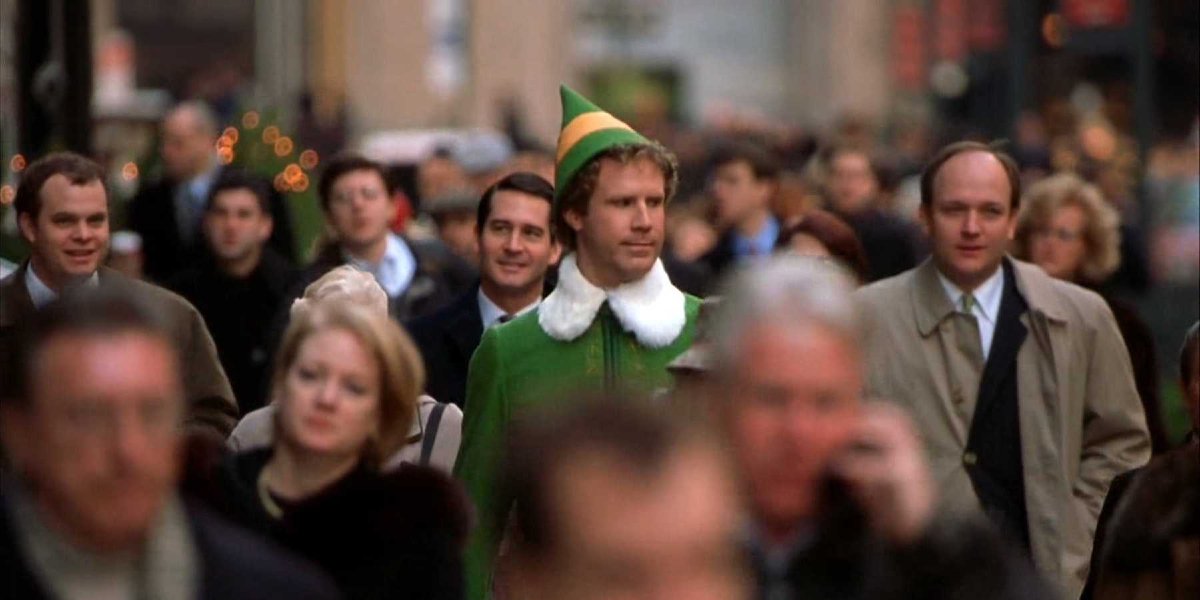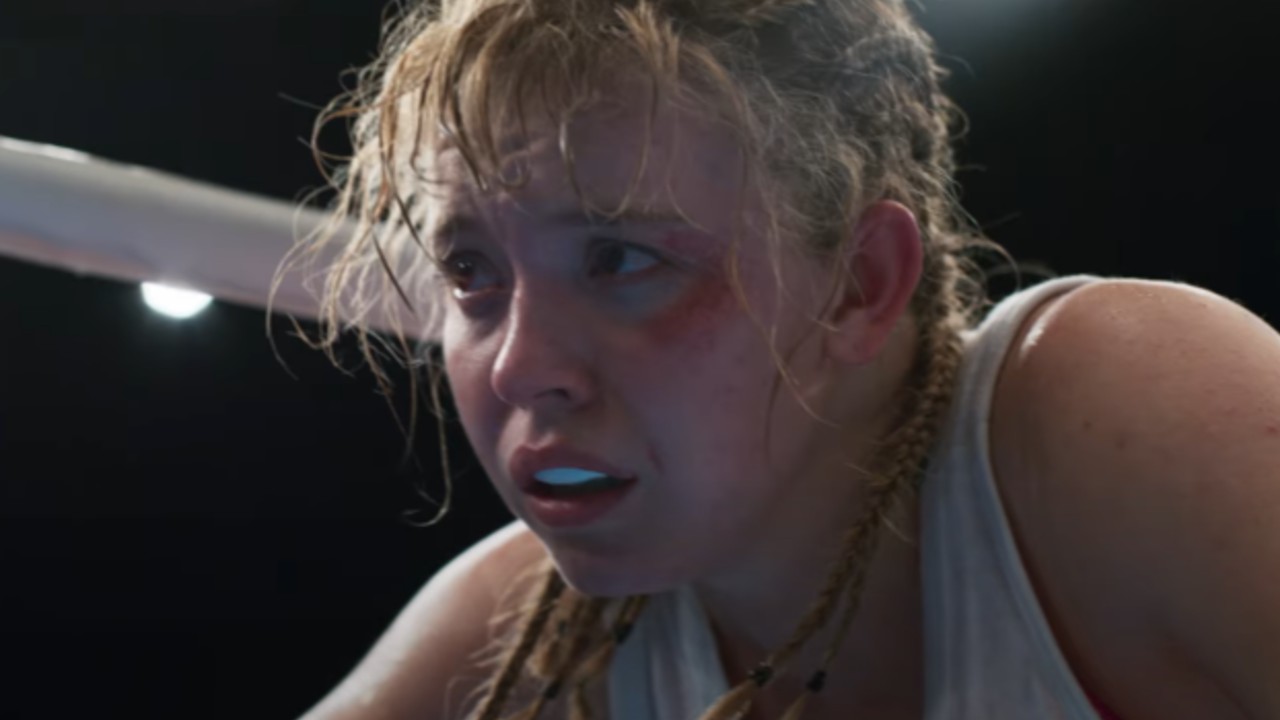7 Things We Learned About Elf After Watching Netflix's The Christmas Movies That Made Us

There are few Christmas movies made within the past 20 years that have withstood the test of time better than the Will Ferrell holiday classic Elf, which is probably why the 2003 comedy was recently made the subject of the Netflix docuseries The Christmas Movies That Made Us. Over the course of the 45-minute mini-documentary, the film's producers and other key members of the crew shed light on how the movie came together and what it means for them professionally, and more importantly, on a personal level.
And while we have discussed various behind-the-scenes facts about Jon Favreau's Elf in the past, the information and heartwarming story about the making of the movie highlighted in the Netflix show is just too good to pass up. Here are seven things we learned about Elf after watching The Christmas Movies That Made Us.

Elf Was Inspired By The Death Of David Berenbaum's Father
A lot of funny stories about the making of Elf are shared in The Christmas Movies That Made Us, but there is also a ton of heart and sentimentality sprinkled throughout, including the story about how screenwriter David Berenbaum came up with the idea for the movie in the first place. Berenbaum was inspired by the old Rankin/Bass animated specials of his childhood when coming up with Elf, but the inspiration for the film's central came from his personal history:
My father passed away when I was younger. So the emotional drive of the movie is really searching for the father, and I knew telling the story that I could connect to it on that level. I knew that's the journey I wanted Buddy to go on.
Near the end of the episode, David Berenbaum explained again that he really wanted this movie to be about Buddy setting out to find and bond with his father after all these years, and that with Walter (James Caan) hugging his long-lost son in the movie's final moments made the movie for him.

Much Of What Was Filmed On The Streets Of New York Was Shot 'Guerrilla Style'
When Buddy first travels to New York City in the opening act of Elf, he is seen walking through the Lincoln Tunnel and down the streets of New York City (even the disgusting gum eating scene) were all filmed with what the film's producers called a "guerrilla style" of filmmaking. This means that every person you saw with Buddy in the "Tootsie" shot (the one that's a carbon copy of a scene from Tootsie) on Park Avenue weren't paid extras and were actual New Yorkers. Director of photography Greg Gardiner revealed in The Christmas Movies That Made Us that this needed to be done in order to add a level of realness to the movie.

A Hockey Arena And Abandoned Mental Institution Were Also Used
After a short time filming exterior shots in New York City, the production of Elf shifted over to Vancouver, Canada, where all of the interior scenes and even the North Pole sections of the movie were filmed in some rather unique locations.
For all those interiors shots (the Gimbles department store, Greenway Press, the Hobbs' apartment), production designer Rusty Smith converted an abandoned mental institution, which despite being unsettling at first, ended up being quite practical for the shoot. The North Pole scenes proved to be more problematic for the crew, and after not being able to film the wide shots in a studio, the crew shifted things over to a public use hockey arena in Vancouver and set up shop there.
Your Daily Blend of Entertainment News

Jon Favreau Insisted On Avoiding Digital Animation To Create A Timeless Christmas Movie
When Jon Favreau was first brought on to direct Elf, he wanted to do three things with the movie: make it look like the Rankin/Bass specials, make it a truly family Christmas movie, and make it a timeless Christmas classic. In order to make it timeless, Favreau insisted on not using digital effects like so many other movies were using at the time. Instead, the director wanted to use as many practical effects as possible and make it to where it wouldn't feel dated in a few years.

The Camera Crew Used Forced Perspective To Make Buddy Seem Larger Than The Other Elves
In order to make it look like Buddy the Elf was much larger than the other elves throughout the North Pole portions of the movie, the camera crew utilized the tried and tested method of using forced perspective, which is similar to the techniques used by Peter Jackson in the Lord of the Rings trilogy. One of the best examples highlighted in The Christmas Movies That Made Us is the school scene in which Buddy looks like a giant compared to the other students. To pull this off, Will Ferrell was situated on the other side of the room but when the camera was lined up a certain way, it gave off the impression he was right next to other (and now much smaller) actors.

The Callbacks To Rankin/Bass' Classics Almost Derailed The Movie
Screenwriter David Berenbaum and director Jon Favreau were both very much inspired by the stop-motion animated Rankin/Bass specials like Rudolph the Red-Nosed Reindeer when making Elf, even down to Buddy's outfit looking strikingly similar to the one worn by the Elf Forman in the 1964 animation. And even though the producers initially thought everything was settled, the legal department at New Line Cinema (the film's distributor) weren't so sure, especially when it came to the outfit. The production crew tried shooting all of Will Ferrell's scenes in the original outfit and a new costume one day and even considered digitally altering the color digitally before it was resolved and they were able to proceed normally.

New Line Almost Made A Big Change To Elf's Ending
One of the biggest revelations from The Christmas Movies That Made Us has to do with the cut of Elf that was shown to test audiences months before its release. The producers, screenwriter, and pretty much everyone else involved were at the screening and were confused when the movie ended before the big heartwarming "Santa Claus Is Coming To Town" singalong with the crowd in Central Park helps Santa (Ed Asner) fly off and deliver the presents.
As it turns out, the powers that be at New Line Cinema tried to make a change to the ending, and other elements of the movie, to make it better suited for fans of Will Ferrell's then-recent comedy smash hit Old School. This meant taking out the heartfelt moments and making it a more traditional comedy. Luckily for everyone, the crew refused to let that happen and the studio agreed to have a test screening of Jon Favreau's original cut, and the rest is history.
This is just a small sampling of everything that was covered in The Christmas Movies That Made Us episode about Elf. There are also stories about the A-list actors who were attached or approached, the directors who were contacted before Jon Favreau, and how everyone was terrified of James Caan on set (and for good reason). Don't forget to check the show out for yourself on Netflix where you'll also find The Movies That Made Us episode about another Christmas classic, Home Alone.

Philip grew up in Louisiana (not New Orleans) before moving to St. Louis after graduating from Louisiana State University-Shreveport. When he's not writing about movies or television, Philip can be found being chased by his three kids, telling his dogs to stop barking at the mailman, or chatting about professional wrestling to his wife. Writing gigs with school newspapers, multiple daily newspapers, and other varied job experiences led him to this point where he actually gets to write about movies, shows, wrestling, and documentaries (which is a huge win in his eyes). If the stars properly align, he will talk about For Love Of The Game being the best baseball movie of all time.
